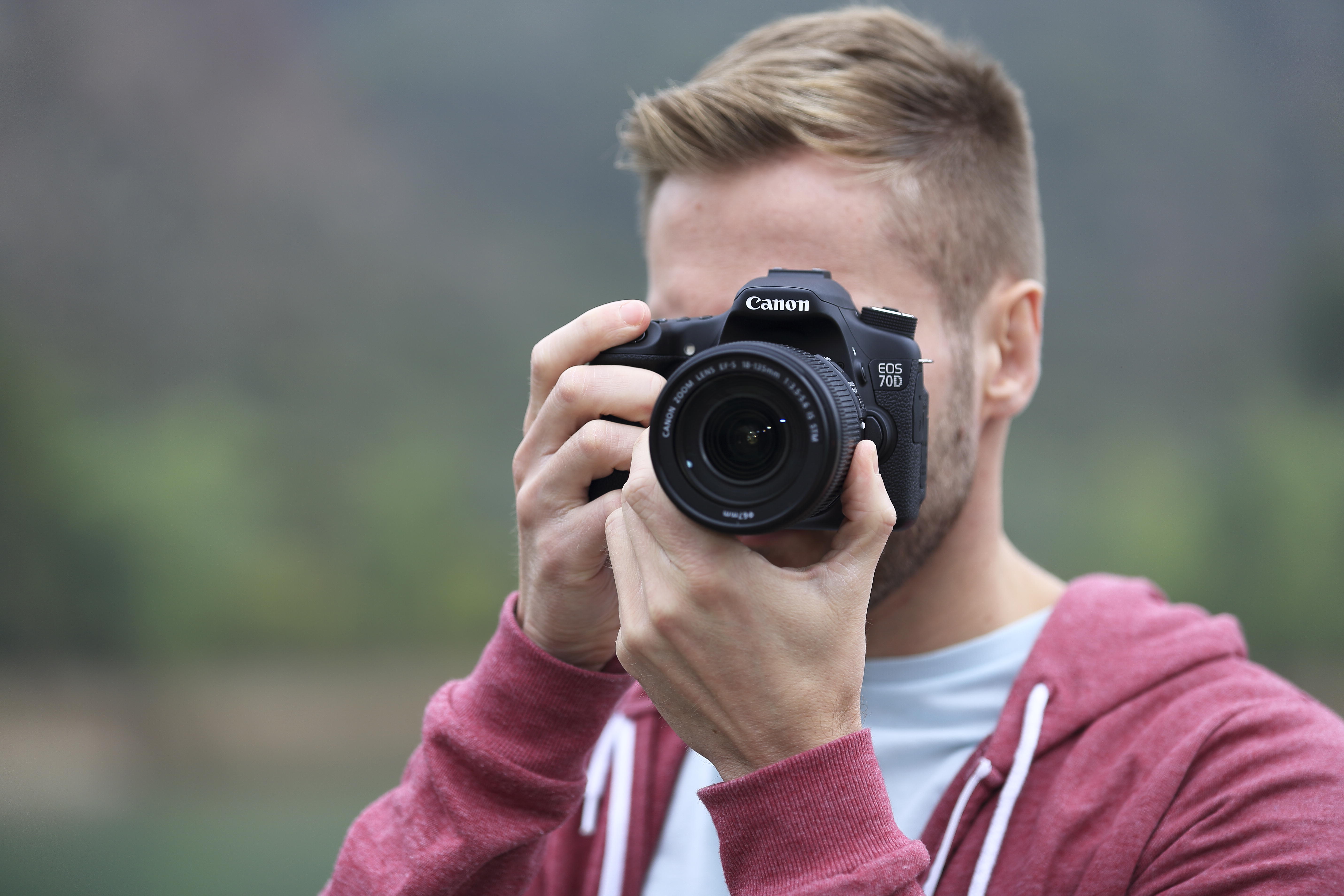Why you can trust TechRadar
Canon has opted to use capacitive technology for the Canon 70D's touchscreen, and this ensures that it's very responsive. We suspect that even those who don't intend to use the touchscreen will find that they do gradually, starting with swiping from image to image in review mode, perhaps progressing to pinch-zooming to check images' sharpness, and then eventually progressing to taking more control over the camera via the screen.

The touchscreen is particularly useful for quickly setting the AF point in Live View and Movie mode, It can also be used to set the AF point when shooting with the camera held to the eye, just press the AF point selection button and then tap the desire point on the screen (or use the navigation keys).
The viewfinder in the EOS 70D is a nice, bright unit, but 'only' covers 98% of the frame, so you may still find the odd surprise around the edges of your images.
The viewfinder can also display an electronic level to indicate whether the camera is on an even keel or not. In the past, Canon has used the AF point display for its electronic level, but this has the disadvantage of switching off the minute the shutter release button is pressed.
While this level is still available, Canon has also given the 70D the option to display a new icon at the bottom of the viewfinder, and this remains visible even when the shutter release is pressed. It's a much better system, but it takes a little while to get used to how sensitive the level is.
Because the level icon isn't illuminated, it's also quite hard to see when shooting dark subjects, or when shooting at night-time.

Canon has one of the best automatic white balance systems around, and on the whole it does a good job of capturing pleasant-looking colours that reflect the conditions without overly correcting for any particular light source. Images sometimes err on the side of warmth, but the results were generally very pleasant and better than cold, 100% accurate shots.
Sign up for breaking news, reviews, opinion, top tech deals, and more.
In the Standard picture style the Canon 70D produces images with pleasantly saturated, natural colours. However, there's a trend towards more vibrant tones and stronger contrast these days, so some may prefer to boost the saturation and contrast in-camera using the available settings adjustments.
There are no surprises with the Canon 70D's 63-zone iFCL metering system. It generally performs well, but because of the weighting that it gives to the brightness of the subject and that the active AF point, it is prone to over- or under-exposing in high contrast conditions.

This can be a real problem when shooting sunlit landscapes, because you need to be very careful about where you set the AF point. If it's positioned over a patch of pale grass in full sun, the chances are that the rest of the image will be underexposed, whereas positioning the active AF point over a shadow area will result in the majority of the image being over-exposed.
Many of the enthusiasts who make up the target market for the Canon 70D will be experienced enough to know how to deal with such an issue. But less experienced photographers may fall foul of the metering system. One way around the problem is to shoot in manual exposure mode, taking a spot meter reading (Partial, Spot and Centre weighted metering are available, in addition to Evaluative) from a mid-tone.
Image quality
Our tests show that the Canon 70D is capable of capturing plenty of detail. However, even at the lowest sensitivity settings there's a clear benefit to shooting raw files, since out of focus areas in JPEGs sometimes have a slightly watercolour appearance at 100% on-screen. In comparison, raw files look more natural.
Even images taken at ISO100 have a slight texture visible at 100%, but chroma noise (coloured speckling) isn't a major issue throughout the native sensitivity range. As usual, however, in-camera noise reduction takes its toll on detail as sensitivity rises.
Raw files converted to TIFFs using the default settings in Digital Photo Professional look a little better than the JPEG files captured simultaneously, but we think it's best to turn down the noise reduction a little as the raw files are processed, to reveal a bit more detail.
That said, there's an impressive amount of detail visible in images captured at ISO12,800, and although there's a fine-grained texture visible when images are sized to make A4 prints, it isn't objectionable. If light levels permit, however, we'd recommend keeping below ISO6400 where possible.
Current page: Performance and image quality
Prev Page Build, handling and AF Next Page Sample images